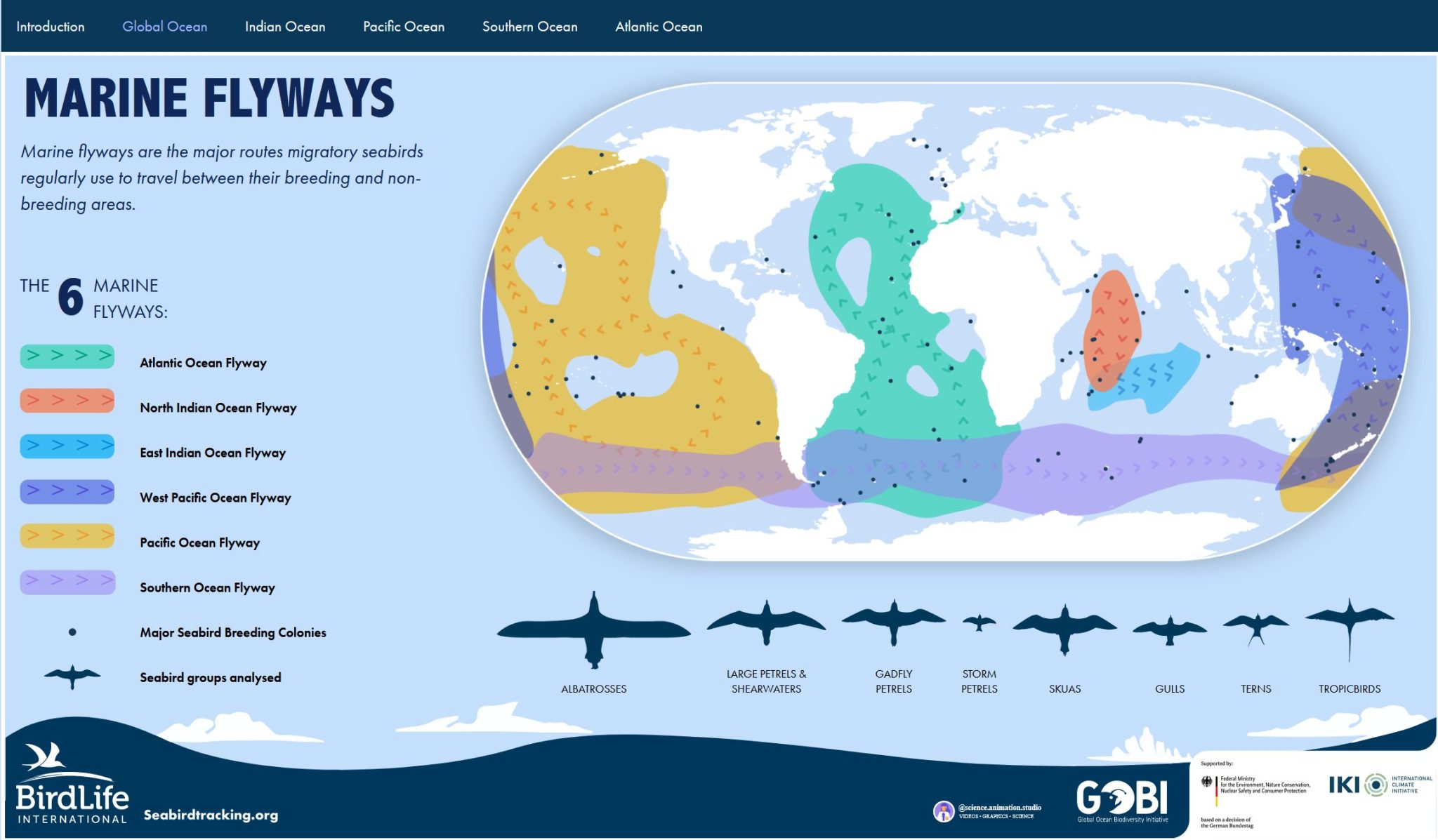 A graphic depicting the six Marine Flyways and species that utilise them. Graphic and video below by Science Animation Studio
A graphic depicting the six Marine Flyways and species that utilise them. Graphic and video below by Science Animation Studio
In an extension to the established concept of flyways (well-established and repeated routes used by migrating birds) and mirroring its Global Flyways Program that connects conservation organisations along these flyways, BirdLife International has launched the Marine Flyway concept to help coordinate global conservation action for migrating seabirds.
Migratory bird populations face numerous threats, with challenges compounded for species that traverse vast distances and rely on habitats spanning multiple countries. Seabirds, among the most imperilled avian groups, embark on migrations over open waters, a phenomenon not adequately addressed by existing flyways.
BirdLife's initiative, supported by an extensive analysis of tracking data from over 60 researchers via the Seabird Tracking Database, has identified six major Marine Flyways. These include the Atlantic Ocean Flyway, North Indian Ocean Flyway, East Indian Ocean Flyway, West Pacific Ocean Flyway, Pacific Ocean Flyway, and Southern Ocean Flyway.
It is hoped that identifying these flyways will open new avenues for understanding and conserving seabirds, facilitating international collaboration to address threats along the newly identified Marine Flyways.
Further information on the Marine Flyways concept can be found at BirdLife’s website, and an informative webinar from the launch of the concept is available to watch, here.
31 January 2024

 Français
Français  English
English  Español
Español